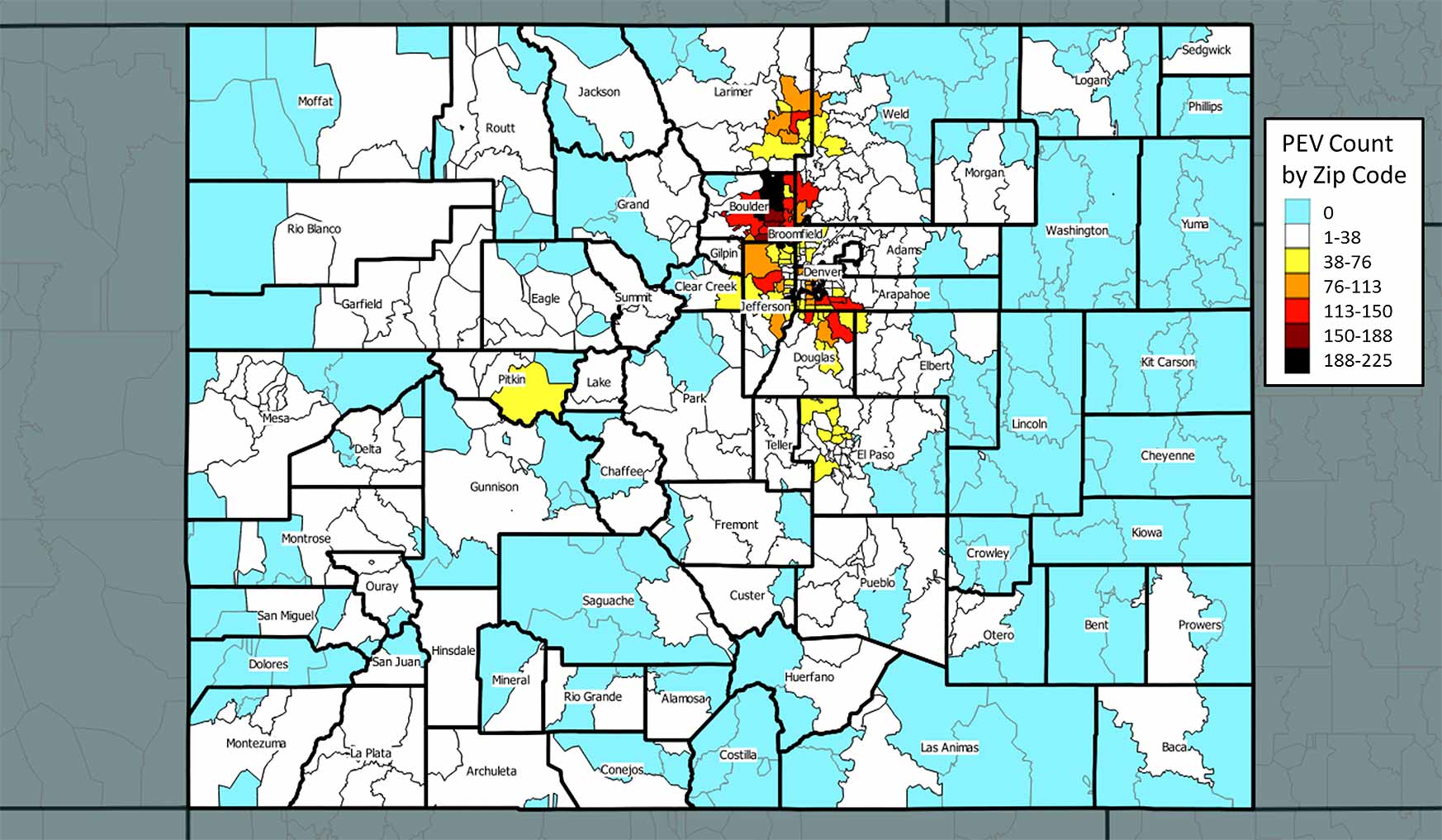Study Estimates Consumer Demand for Electric Vehicle Charging Stations in Colorado
As the number of electric vehicles (EVs) in Colorado continues to rise, the demand for publicly accessible charging stations increases as well. To help the state predict consumer demand for direct current fast charge (DCFC) stations, NREL conducted a study in partnership with the Regional Air Quality Council and the Colorado Department of Transportation.

NREL analyzed electric vehicle registration data to highlight early trends in the market, compared with sales forecasts predicting large growth in Colorado. Electric vehicle forecasts were then used to develop future charging station scenarios evaluated in BLAST-V simulations.
The State of Colorado supports consumer adoption of EVs to improve air quality, reduce petroleum consumption, and lower transportation costs for consumers. This support is evident in the Alternative Fuel Motor Vehicle Income Tax Credits, which provide Colorado motorists with tax credits up to $5,000 toward the purchase of a light-duty EV, with larger credits available for commercial vehicles.
In addition to purchase incentives, consumer access to a robust network of publicly accessible charging stations is vital to increased EV adoption. As the State of Colorado considers opportunities for public and private investments in charging station infrastructure, it needs reliable estimates of consumer demand for and utilization of such infrastructure.
"To support the State of Colorado in planning for EV infrastructure growth, we analyzed a number of investment scenarios," said Eric Wood, lead author of a recently published report on the study—EVs in Colorado: Anticipating Consumer Demand for Direct Current Fast Charging. "DCFC demand was shown to be greatest along inter-city corridors, particularly along the I-25 corridor connecting Colorado's largest population centers."
NREL coupled detailed weekday travel data with its Battery Lifetime Analysis and Simulation Tool for Vehicles (BLAST-V), developed with funding from the U.S. Department of Energy's Vehicle Technologies Office, to estimate the potential impacts of various DCFC scenarios in Colorado. The study used real-world personal travel data from Colorado to simulate thousands of EVs driving and charging.
"These simulations allowed us to experiment with hypothetical DCFC networks and estimate benefits to consumers, particularly the role that an expanded network of chargers could play in increasing the number and type of trips possible for an electric vehicle," Wood added. "Simultaneously, we estimated utilization of individual DCFC stations, giving planners empirical data for prioritizing investments in charging infrastructure."
Last Updated May 28, 2025
